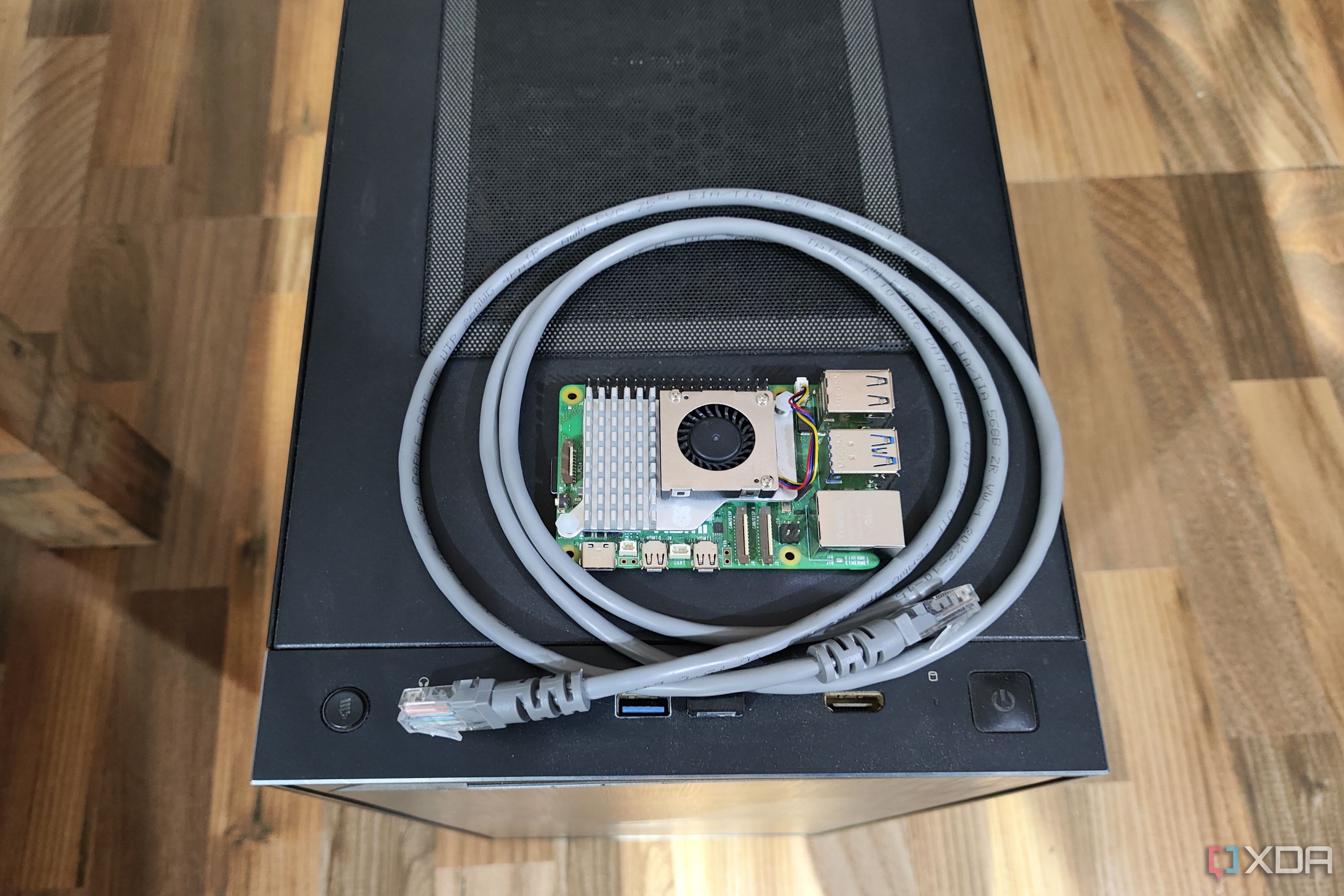Raspberry Pi VPN Firewall Tutorial: Your Ultimate Guide To Enhanced Security
Ever wondered how to turn your Raspberry Pi into a supercharged security powerhouse? Well, buckle up, because this tutorial is about to blow your mind. We’re diving deep into the world of Raspberry Pi, VPNs, and firewalls—three tools that, when combined, can revolutionize your online security game. Whether you’re a tech enthusiast or just someone looking to protect their data, this guide has got you covered. So, let’s get started and make your digital fortress unbreakable.
Raspberry Pi isn’t just a tiny computer; it’s a game-changer for hobbyists, developers, and security enthusiasts alike. By setting up a Raspberry Pi VPN firewall, you can create a robust network security solution that protects your data from prying eyes. In today’s digital age, where cyber threats are lurking around every corner, having a reliable security setup is no longer optional—it’s essential.
This tutorial isn’t just another tech article; it’s a step-by-step guide designed to make even the most complex concepts easy to understand. Whether you’re building a home network or securing your small business, this Raspberry Pi VPN firewall setup will be your go-to solution. So, grab your Pi, fire up your terminal, and let’s make your network safer than ever!
- Get That N Off The Plane Burger King The Story Behind The Viral Moment
- Burger King Crown Incident The Hamburger Empires Crown Fiasco That Had Everyone Talking
What is a Raspberry Pi and Why Should You Use It?
Raspberry Pi is more than just a cute little computer—it’s a versatile tool that can handle everything from home automation to network security. For our purposes, we’re focusing on its ability to act as a powerful firewall and VPN gateway. But why choose Raspberry Pi over other options? Let’s break it down:
- Affordability: Raspberry Pi is incredibly budget-friendly compared to commercial firewall appliances.
- Customizability: With Raspberry Pi, you have full control over your setup. Want to tweak settings? No problem!
- Energy Efficiency: This little device sips power, making it perfect for always-on applications.
- Community Support: The Raspberry Pi community is vast and welcoming, meaning you’ll never run out of resources or help.
So, if you’re looking for a cost-effective, customizable, and energy-efficient way to secure your network, Raspberry Pi is the way to go.
Understanding the Role of a VPN in Network Security
A Virtual Private Network (VPN) is your digital cloak of invisibility. It encrypts your internet traffic, making it nearly impossible for hackers or snoopers to intercept your data. When paired with a Raspberry Pi, a VPN becomes an integral part of your network security strategy. Here’s why:
- Unpacking The Latest Wizzydigital A Deep Dive Into The Tech Revolution
- What Happened To Amy Allan On Dead Files Unveiling The Mysteries
- Data Encryption: A VPN ensures that all your online activities remain private and secure.
- IP Masking: By hiding your real IP address, a VPN makes it difficult for anyone to track your online presence.
- Access to Restricted Content: A Raspberry Pi-based VPN can help you bypass geo-restrictions and access content from anywhere in the world.
Whether you’re working remotely, streaming your favorite shows, or simply browsing the web, a Raspberry Pi VPN can enhance your security and privacy. It’s like having a personal bodyguard for your digital life.
Why Firewalls Matter in Your Network Security Strategy
A firewall is like a bouncer at a club—it decides who gets in and who stays out. By setting up a firewall on your Raspberry Pi, you can monitor and control incoming and outgoing traffic on your network. Here’s why firewalls are crucial:
- Protection Against Malware: A firewall can block malicious software from entering your network.
- Intrusion Prevention: It detects and stops unauthorized access attempts before they cause damage.
- Granular Control: With a Raspberry Pi firewall, you can create custom rules to suit your specific security needs.
Think of your Raspberry Pi as the gatekeeper of your digital fortress. By combining it with a firewall, you’re adding an extra layer of protection that can make all the difference in keeping your network safe.
Setting Up Your Raspberry Pi for Security
Before we dive into the nitty-gritty of setting up a Raspberry Pi VPN firewall, let’s make sure your Pi is ready to roll. Here’s what you’ll need:
Hardware Requirements
- Raspberry Pi 4 (or any model with enough processing power)
- MicroSD card (16GB or higher)
- Power supply
- Ethernet cable (optional, but recommended for stable connections)
Once you’ve gathered your hardware, it’s time to install the operating system. We recommend using Raspberry Pi OS, which is lightweight and easy to use. Follow the official Raspberry Pi documentation to set up your device.
Installing and Configuring a Firewall on Raspberry Pi
Now that your Raspberry Pi is up and running, it’s time to set up a firewall. We’ll be using UFW (Uncomplicated Firewall), a user-friendly tool that simplifies firewall configuration.
Step 1: Update Your System
Before installing UFW, make sure your system is up to date. Open the terminal and run:
sudo apt update && sudo apt upgrade
Step 2: Install UFW
Installing UFW is a breeze. Just type:
sudo apt install ufw
Step 3: Configure UFW Rules
UFW allows you to create custom rules to control network traffic. Here’s a basic setup:
- Allow SSH access: sudo ufw allow ssh
- Deny all incoming connections: sudo ufw default deny incoming
- Allow outgoing connections: sudo ufw default allow outgoing
Once you’ve set your rules, enable UFW with:
sudo ufw enable
And just like that, your Raspberry Pi firewall is up and running!
Setting Up a Raspberry Pi VPN
With your firewall in place, it’s time to add a VPN to the mix. We’ll be using OpenVPN, a popular open-source solution that’s easy to set up and highly secure.
Step 1: Install OpenVPN
Start by installing OpenVPN on your Raspberry Pi:
sudo apt install openvpn
Step 2: Download Your VPN Configuration Files
Most VPN providers offer configuration files that make setup a breeze. Download these files from your provider’s website and transfer them to your Raspberry Pi.
Step 3: Connect to Your VPN
To connect to your VPN, navigate to the configuration file directory and run:
sudo openvpn --config [config_file_name].ovpn
That’s it! Your Raspberry Pi is now connected to your VPN, providing an additional layer of security.
Combining Your Raspberry Pi Firewall and VPN
Now that you’ve set up both your firewall and VPN, it’s time to combine them for maximum security. Here’s how:
- Route Traffic Through the VPN: Configure your firewall to send all outbound traffic through the VPN tunnel.
- Create Custom Rules: Use UFW to create rules that block unwanted traffic and allow only necessary connections.
- Monitor Logs: Regularly check your firewall logs to identify and address potential threats.
By integrating your firewall and VPN, you’re creating a comprehensive security solution that protects your network from all angles.
Troubleshooting Common Issues
Even the best-laid plans can hit a snag. Here are some common issues you might encounter and how to fix them:
Issue 1: Unable to Connect to the Internet
Solution: Check your firewall rules to ensure that outgoing connections are allowed. Also, verify that your VPN is properly configured.
Issue 2: Slow Internet Speed
Solution: Try switching to a different VPN server or adjusting your firewall settings to optimize performance.
Issue 3: Firewall Blocking Necessary Traffic
Solution: Review your UFW rules and adjust them to allow essential services and applications.
Don’t let these issues discourage you. With a little troubleshooting, your Raspberry Pi VPN firewall will be running smoothly in no time.
Advanced Tips for Power Users
If you’re looking to take your Raspberry Pi security setup to the next level, here are some advanced tips:
- Use a Load Balancer: Distribute traffic across multiple servers to improve performance and reliability.
- Implement Intrusion Detection Systems (IDS): Add an extra layer of protection by monitoring your network for suspicious activity.
- Automate Updates: Set up automatic updates for your Raspberry Pi OS and software to ensure you’re always running the latest versions.
For those who want to push the limits of their Raspberry Pi, these advanced techniques can help you create a truly robust security solution.
Conclusion: Your Raspberry Pi VPN Firewall is Now Ready
And there you have it—a comprehensive guide to setting up a Raspberry Pi VPN firewall. By following this tutorial, you’ve taken a significant step toward enhancing your network security. Remember, in today’s digital landscape, security isn’t optional—it’s essential.
So, what’s next? Leave a comment below and let us know how your setup went. Did you encounter any challenges? Share your tips and tricks with the community. And don’t forget to check out our other articles for more Raspberry Pi goodness.
Stay secure, stay curious, and keep hacking!
Table of Contents
- What is a Raspberry Pi and Why Should You Use It?
- Understanding the Role of a VPN in Network Security
- Why Firewalls Matter in Your Network Security Strategy
- Setting Up Your Raspberry Pi for Security
- Installing and Configuring a Firewall on Raspberry Pi
- Setting Up a Raspberry Pi VPN
- Combining Your Raspberry Pi Firewall and VPN
- Troubleshooting Common Issues
- Advanced Tips for Power Users
- Conclusion



Detail Author:
- Name : Lamar Koss
- Username : lowell08
- Email : zrunte@walsh.com
- Birthdate : 1974-08-19
- Address : 34037 Devon Squares Apt. 031 Schadenfurt, AL 53730
- Phone : +1.551.755.5113
- Company : Lockman-Shields
- Job : Supervisor Fire Fighting Worker
- Bio : Et sit ex sunt earum iste non est. Aut quisquam nam ut est. Dolorum non harum dolore reprehenderit. Architecto est illo ea ut non aspernatur.
Socials
facebook:
- url : https://facebook.com/mac.cummings
- username : mac.cummings
- bio : Iusto omnis eos culpa optio labore. Magni ad magni vel reprehenderit nisi.
- followers : 6632
- following : 2000
twitter:
- url : https://twitter.com/maccummings
- username : maccummings
- bio : Distinctio qui voluptas animi dolore quod aliquid. Est quae dignissimos repudiandae repellendus. Fuga maiores autem ut non ratione.
- followers : 2156
- following : 2659
linkedin:
- url : https://linkedin.com/in/mcummings
- username : mcummings
- bio : Dolores vel aliquid tempore ullam.
- followers : 790
- following : 1873
instagram:
- url : https://instagram.com/maccummings
- username : maccummings
- bio : Suscipit atque earum repellendus. Id corporis molestiae at quidem. In veniam molestiae dolore.
- followers : 744
- following : 1956
tiktok:
- url : https://tiktok.com/@mac_cummings
- username : mac_cummings
- bio : Nemo eum vel libero tempore magni. Qui doloribus eaque corrupti aut.
- followers : 5950
- following : 2650